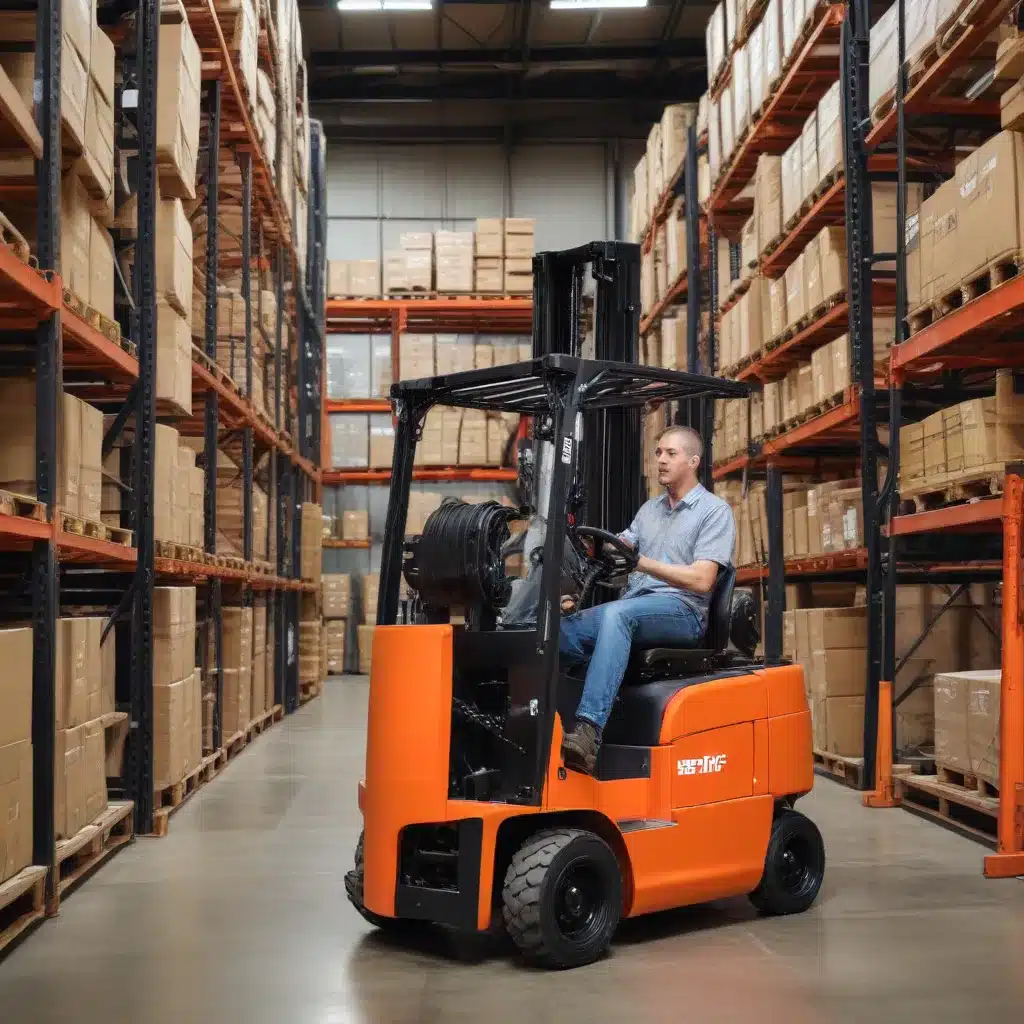
Prioritizing Operator Wellbeing for Enhanced Forklift Performance
As an experienced industry expert in forklifts, warehousing, and logistics, I’ve witnessed firsthand the profound impact that ergonomics can have on forklift operator comfort, safety, and overall productivity. In this comprehensive article, we’ll delve into the critical role of forklift fleet ergonomics and explore practical strategies to optimize operator wellbeing, leading to a more efficient and successful material handling operation.
Enhancing Operator Comfort Through Ergonomic Design
The foundation of a well-performing forklift fleet lies in prioritizing the comfort and ease of use for the operators. Forklift manufacturers have made significant strides in incorporating ergonomic principles into their product designs, recognizing that a comfortable operator is a more productive one.
One of the key ergonomic features to look for in a forklift is an adjustable, cushioned seat that provides ample lumbar support. This helps to alleviate the strain on the operator’s back and neck, especially during extended shifts. Additionally, controls and steering mechanisms should be within easy reach and positioned to minimize repetitive motions, reducing the risk of musculoskeletal disorders.
Visibility is another crucial aspect of forklift ergonomics. Forklifts with strategically placed mirrors, cameras, and intuitive display interfaces allow operators to maintain a neutral head and neck position while navigating the warehouse efficiently. This not only enhances safety but also reduces eye strain and fatigue.
Furthermore, ergonomic features such as adjustable armrests, pedal placement, and vibration-dampening systems can contribute to an overall more comfortable and less physically demanding operating experience. By investing in forklifts that prioritize ergonomics, you can empower your operators to work longer shifts with greater ease and reduced risk of injury.
Promoting Productivity Through Ergonomic Optimization
Beyond enhancing operator comfort, ergonomic forklift design also plays a significant role in boosting productivity. When operators are provided with equipment that supports their natural movements and reduces physical strain, they can focus on their tasks with greater efficiency and focus.
One of the ways ergonomics can improve productivity is by minimizing the effort required to complete common forklift operations. For instance, forklifts with intuitive control layouts and responsive steering allow operators to maneuver and navigate through tight warehouse spaces with greater agility, reducing the time needed to complete each task.
Additionally, ergonomic features that promote proper posture and reduce fatigue can enable operators to maintain a consistent level of performance throughout their shifts. This translates to faster load handling, more accurate pallet placement, and fewer errors – all of which contribute to improved overall productivity.
Incorporating ergonomic principles into forklift fleet management can also yield long-term benefits in terms of operator retention and reduced training requirements. When operators feel comfortable and supported by their equipment, they are more likely to remain engaged and committed to their roles, leading to a more experienced and efficient workforce.
Fostering a Culture of Safety and Wellbeing
Ergonomic forklift design not only enhances operator comfort and productivity but also plays a crucial role in promoting a culture of safety within the workplace. By reducing the physical strain on operators, ergonomic features can help prevent a wide range of work-related injuries, including musculoskeletal disorders, repetitive strain injuries, and accidents caused by fatigue or discomfort.
When operators feel safe and supported in their work environment, they are more likely to maintain heightened safety awareness and adhere to proper operating procedures. This, in turn, can lead to a reduction in costly workplace incidents, lost productivity, and potential legal liabilities associated with forklift-related accidents.
Furthermore, by prioritizing ergonomics in your forklift fleet, you demonstrate a genuine commitment to the wellbeing of your employees. This can foster a positive work culture, boost morale, and enhance employee satisfaction – all of which contribute to a more engaged and dedicated workforce.
Maximizing Return on Investment Through Ergonomic Optimization
While the initial investment in ergonomic forklift equipment may be higher, the long-term benefits often outweigh the additional costs. By reducing the risk of operator injuries, minimizing downtime, and improving overall productivity, ergonomic forklifts can provide a significant return on investment for your material handling operation.
Reduced workers’ compensation claims, decreased absenteeism, and lower training and recruitment costs are just a few of the financial advantages of prioritizing ergonomics in your forklift fleet. Additionally, the enhanced efficiency and throughput achieved through ergonomic optimization can lead to increased profitability and a stronger competitive edge in the market.
When evaluating forklift options, it’s essential to consider the total cost of ownership, which encompasses not only the initial purchase price but also the ongoing operational and maintenance expenses. By investing in ergonomic forklifts, you can optimize your material handling costs while ensuring the well-being and productivity of your workforce.
Conclusion: Embracing Ergonomic Forklift Solutions for Sustained Success
In the fast-paced world of material handling, prioritizing forklift ergonomics is no longer a luxury – it’s a necessity. By incorporating ergonomic principles into your forklift fleet management, you can create a more comfortable, productive, and safe work environment for your operators, ultimately leading to enhanced operational efficiency and long-term business success.
As you evaluate your forklift options, be sure to carefully assess the ergonomic features and their potential impact on operator wellbeing and productivity. Engage your operators in the decision-making process, gather their feedback, and work closely with your forklift provider to tailor the equipment to your specific needs.
Remember, a well-designed and ergonomically optimized forklift fleet is not just an investment in your equipment – it’s an investment in your most valuable asset: your people. By prioritizing operator comfort and safety, you unlock the true potential of your material handling operation, setting the stage for sustained growth and profitability.
To learn more about optimizing your forklift fleet and warehouse operations, I encourage you to visit Forklift Reviews – your go-to resource for industry-leading insights and solutions.

